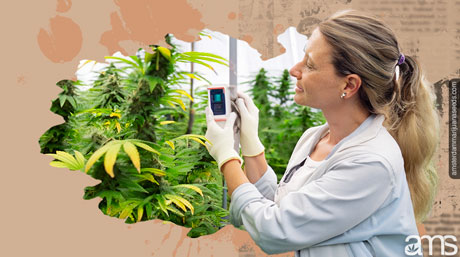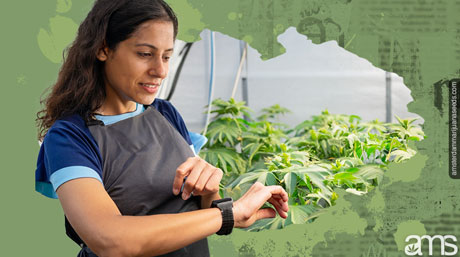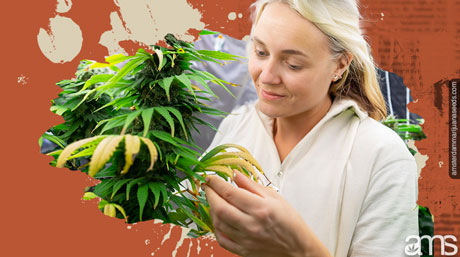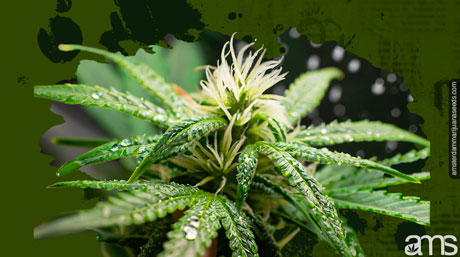environmental factors impact cannabis plants
In this article you will find answers to following questions: How does temperature affect cannabis plants?, What are the effects of light stress on marijuana cultivation?, Why is it essential to control humidity for cannabis plant health?, What are some environmental factors impacting marijuana plants?, How can you mitigate the impact of temperature on cannabis cultivation?, What methods can be used to manage humidity for better marijuana growth?, Why is understanding environmental factors crucial for cannabis cultivation?, How does light stress influence marijuana plant health?, What are some ways to regulate temperature during cannabis growth?, How do environmental factors affect the overall health of marijuana plants?
Understanding the Environmental Factors Affecting Cannabis Cultivation
As a passionate marijuana grower, you know that cultivating healthy and thriving cannabis plants requires more than just planting seeds and watering them. Environmental factors play a crucial role in the success of your marijuana cultivation endeavors. In this comprehensive guide, we will explore the various environmental challenges cannabis plants face, such as temperature, humidity, and light stress, and how you can effectively mitigate their effects.
1. Marijuana seeds – The Foundation of Your Growth
To embark on a successful cannabis cultivation journey, the first step is acquiring high-quality cannabis seeds. When you buy marijuana seeds, make sure to choose a reputable source that offers a wide variety of strains to suit your preferences and growing conditions. Whether you’re looking for auto-flowering, feminized, or regular cannabis seeds , do thorough research to ensure you are investing in premium genetics.
2. Cannabis Temperature – Striking the Right Balance
Temperature regulation is one of the most critical factors that can significantly impact cannabis plants. These green beauties thrive in a specific temperature range, ideally between 20°C to 30°C (68°F to 86°F) during the light period, and slightly cooler temperatures, around 18°C to 24°C (64°F to 75°F) during the dark period. Fluctuations outside this range can result in adverse effects on growth, flowering, and overall plant health.
During the colder months, consider using heaters to maintain the desired temperature range in your grow room. Conversely, for hot summer days, invest in ventilation systems or air conditioning to prevent the plants from becoming stressed due to excessive heat.

3. Humidity Control – The Key to Preventing Mold and Mildew
Humidity management is another vital aspect of marijuana cultivation. High humidity levels can lead to mold and mildew issues, which can be devastating for your plants. On the other hand, low humidity levels can cause stress, slow growth, and negatively impact the yield.
For the vegetative phase, maintain humidity levels between 40% to 70%. As the plants enter the flowering phase, gradually reduce humidity to around 40% to 50% to prevent mold development in the dense buds.
To maintain optimal humidity levels, use humidifiers or dehumidifiers as necessary. Additionally, proper airflow in the grow room will aid in regulating humidity levels and minimize the risk of mold and mildew.
4. Light Stress Effects – Striving for the Perfect Balance
Light stress can have both positive and negative effects on cannabis plants, depending on how it is managed. Adequate light is essential for robust growth and high-quality yields. However, too much light, especially during the flowering phase, can lead to light stress and hermaphroditism.
During the vegetative phase, marijuana plants thrive under 18 to 24 hours of light per day. Once they enter the flowering phase, reduce the light exposure to 12 hours per day to trigger bud development. Ensure a consistent light schedule, as any interruptions can cause stress and negatively affect your plants.
If you are growing outdoors, be mindful of natural light sources, such as streetlights or security lights, which can disturb the dark period for your plants. Consider using blackout curtains or light-blocking materials to maintain a strict light schedule.

Mitigating Environmental Stress for Healthy Cannabis Plants
Creating an optimal growing environment is fundamental to mitigating environmental stress and fostering healthy marijuana plants. Investing in a well-insulated and properly sealed grow room allows you to have better control over temperature, humidity, and light exposure.
Additionally, consider using reflective materials such as Mylar or white paint on the walls of your grow room to ensure maximum light penetration and distribution. A reflective surface can enhance the efficiency of your grow lights, allowing your plants to receive more usable light.
Temperature and Humidity Monitoring
Maintaining the optimal temperature and humidity levels can be achieved through diligent monitoring. Use thermometers and hygrometers to regularly check the conditions in your grow room. Many modern monitoring systems even allow remote access, enabling you to keep an eye on your plants from anywhere.
With this data at hand, you can quickly identify any deviations and make necessary adjustments to keep your cannabis plants in the comfort zone.

Proper Ventilation and Airflow
Adequate ventilation and airflow are vital for a healthy marijuana garden. A well-ventilated grow room not only helps regulate temperature and humidity but also provides plants with fresh CO2, which is essential for photosynthesis.
Install exhaust fans to expel hot and stale air, and intake fans to bring in fresh air. Place fans strategically to ensure even distribution of air throughout the grow room. Creating a gentle breeze helps strengthen the plants’ stems and prevents stagnant air that could promote mold growth.
Light Stress Management
To minimize light stress, choose the right type of grow lights for your marijuana plants. LEDs, HPS, and CMH lights are popular choices for indoor growers. Each light type has its advantages and disadvantages, so do your research and select the best option based on your specific needs and budget.
During the flowering phase, remember to keep your grow room as dark as possible during the 12-hour dark period. Light leaks can cause stress and interrupt the plants’ natural light cycle, potentially leading to reduced yields and compromised quality.
Nurturing Your Cannabis Plants for Optimal Growth
Proper watering is crucial for healthy marijuana plants. Overwatering can lead to root rot and other moisture-related issues, while underwatering can cause the plants to wilt and suffer nutrient deficiencies.
Water your plants when the top inch of the soil feels dry to the touch. Use your fingers to gauge the moisture level and adjust your watering schedule accordingly. Cannabis plants generally prefer a slightly acidic pH level, around 6.0 to 6.5, in the soil or growing medium.

Nutrient Management
Marijuana plants require a balanced nutrient regimen to thrive. Provide the necessary macro and micronutrients through well-formulated fertilizers. Nutrient deficiencies or excesses can lead to various issues, including stunted growth and nutrient lockout.
Pay attention to the specific nutrient needs of your plants during different growth stages. For example, during the vegetative phase, they require higher levels of nitrogen to support leafy growth, while the flowering phase requires a shift to higher phosphorus and potassium levels to support bud development.
Training and Pruning
Pruning and training techniques can help improve light distribution within the canopy, leading to better overall growth and bud development. Topping, FIMing, and LST (Low-Stress Training) are common methods used by growers to encourage bushier plants and maximize light exposure to lower bud sites.
Pests and Disease Prevention
Keep a close eye on your marijuana plants for any signs of pests or diseases. Early detection is essential to prevent infestations from spreading and causing significant damage to your crops. Use organic pest control methods whenever possible to minimize the use of harmful chemicals.
Additionally, maintain a clean and sanitized grow room to reduce the risk of pests and diseases taking hold. Regularly inspect your plants and surrounding areas, and promptly address any issues you may encounter.
The Satisfying Rewards of Expert Cannabis Cultivation
Congratulations, you’ve now equipped yourself with the knowledge to successfully navigate the challenges posed by environmental factors when growing marijuana. By maintaining optimal temperature and humidity, managing light stress, and providing the right care, you can ensure healthy and thriving cannabis plants that will reward you with bountiful harvests. Happy growing!



